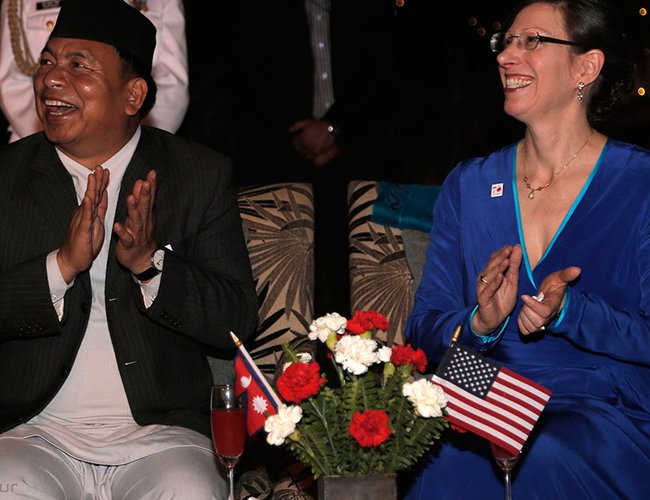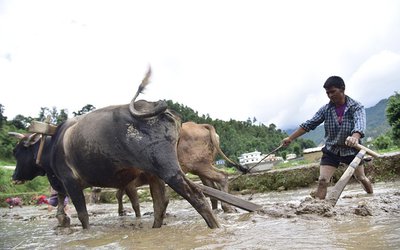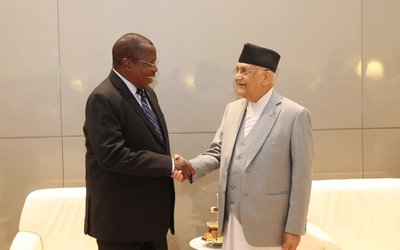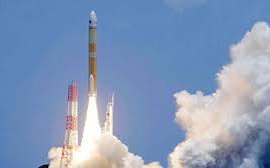
Seventy years ago on April 25, 1947, when Nepal and the United States formally signed an agreement of Commerce and Friendship formally establishing the diplomatic relations between the two countries, Nepal was under an autocratic Rana rule, isolated from the rest of the world. Although the moment was important to show Nepal’s status as an independent nation, an overwhelming majority of people did not notice it because the historic function was confined to the official level.
Seventy years later, the situation has changed a lot. When ambassador of the United States to Nepal Alaina B.Teplitz hosted a reception to mark the 70th anniversary of establishment of the diplomatic relations, there was a big gathering of people from all walks of life, showing the strength of Nepal-US relations as reaching from the state level to the level of people.
Along with vice president Nanda Bahadur Pun, ministers, former ministers, high-level government officials, young entrepreneurs, business men, diplomats and scholars, the gathering drew a diverse range of people to celebrate the 70th anniversary of U.S.-Nepal diplomatic relations.
According to the U.S. Embassy, this event highlighted both the broad strategic partnership between the two countries and the U.S. Government’s decades-long friendship with Nepal.
As Eugene Bramer Mihaly in his book Foreign Aid and Politics in Nepal said Nepal’s per capita income was around US$ 40 when the United States started to extend foreign assistance to Nepal where there were a few schools, hospitals and virtually no road linkages and state institutions.
From day one, the United States started to support Nepal in building institutions. “The government of Nepal initiated the first development project, which it had planned with American encouragement and advice in July 1952, when it opened a Village Development Training Center in Kathmandu,” writes Mihaly in his book.
What American development planners identified as a key area for national development has remained a focus of all the governments for the last seventy years. Despite urbanization and increase in health, education and transport facilities, the village governance and structure is the key area for development.
“Today, the United States partners with Nepal to support inclusive and effective governance, promote political stability and economic development, decrease the country’s dependence on humanitarian assistance, and increase its ability to make positive contributions to regional security and broader global community. The U.S. Government looks forward to many more decades of mutual benefits and friendship,” said a press note.
At the function attended by general people and dignitaries, including Kathmandu-based heads of diplomatic mission, U.S ambassador to Nepal Teplitz said, "Over these past seven decades, we have enjoyed a broader based partnership between our two countries and many strong friendships between our peoples. This year’s anniversary gives us the chance to appreciate the tremendous accomplishments of our partnership here in Nepal. Together, we have supported inclusive and effective governance, bolstered human and economic development, reduced vulnerabilities to disease and disasters, promoted political stability, and increased Nepal’s ability to make positive contributions to regional security in South Asia and through international peacekeeping."
Ambassador Teplitz said, “Let me give some specific achievements: In 1960, life expectancy in Nepal was 35 years, and in 1980, the literacy rate for women stood at just 9 percent. Today, the average Nepali lives to 70. Some 65 percent of adult females are literate and maternal mortality deaths dropped by 75 percent since 1990. In the past 15 years, Nepal cut its poverty rate in half.”
“The United States is proud to be a partner with Nepal both through our government, as well as by motivated citizens from both the nations. Let me clear, the U.S. has also benefited from this relationship in many ways, including through increased regional stability, stronger economic ties, better military cooperation, and enhanced educational exchange,” said ambassador Teplitz.
As the gathering showed, Nepal and U.S. relations have reached all levels, even to the bottom rung of the society. According to the report, 9662 Nepalese students studied in the United States in 2015-2016. Nepal had the second highest increase of the international students to the United States with 18.4 percent.
“The contribution made by the United States in the economic and social development of Nepal is immense. Whether it is in earthquake recovery or rural development, peace, governance, health and education, the United States remains a key partner of Nepal’s all round development,” foreign minister Dr. Prakash Sharan Mahat told New Spotlight.
In the seventy years, many individuals, including Peace Corps volunteers, contributed to taking Nepal’s relations with the United State to the level of people.
- MELAMCHI WATER SUPPLY: No Interruption During Monsoon
- Jun 25, 2025
- KOREAN RETURNEES: Successful Integration
- Jun 25, 2025
- UPPER TRISHULI-1: Engaging With Local
- Jun 25, 2025
- IME GROUP: Twenty Five Years Of Journey
- Jun 24, 2025
- NEPAL’S AIR POLLUTION: A Growing Health Concern
- Jun 24, 2025















